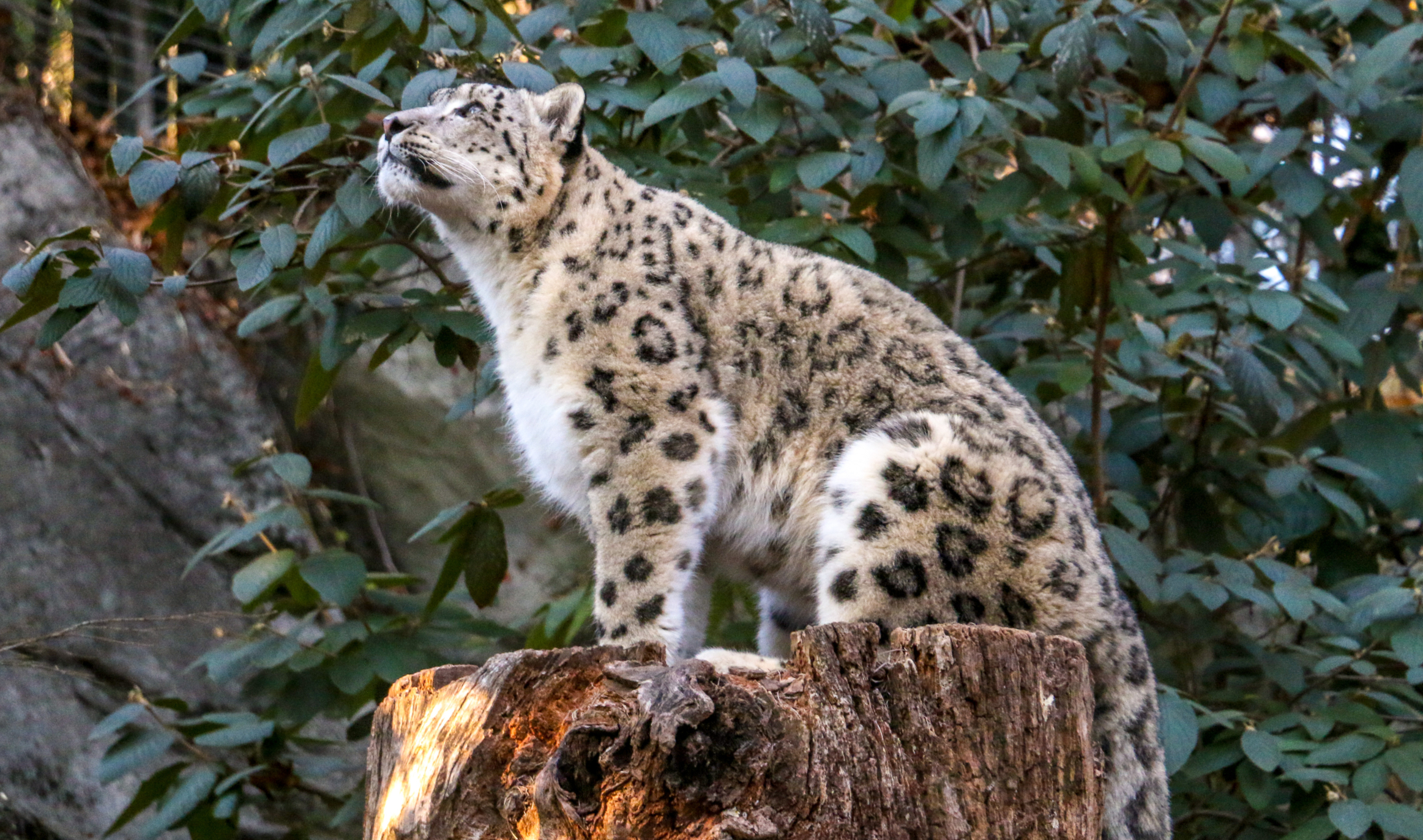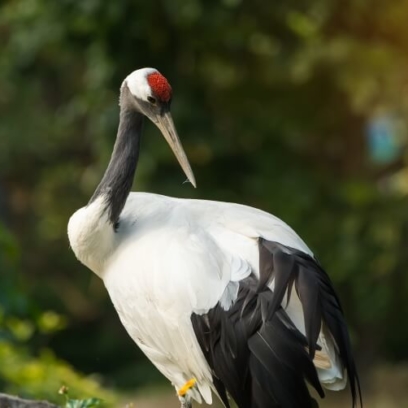Snow Leopard
Uncia unciaIsn’t it Wild? A snow leopard’s large, fur-covered forepaws help them travel on rocky surfaces and avoid sinking into the snow.

There’s More to the Story Snow leopards are recognizable by the long tail and almost white coat, spotted with large black rosettes – a pattern unique to each individual snow leopard. They’re experts at navigating Central Asia’s high mountains, and prefer to inhabit steep cliff areas, rocky outcrops and ravines. Such habitats provide them with the camouflage they need to ambush unsuspecting prey. The snow leopards’ favored prey animals are herbivores, such as blue sheep, Argali sheep and ibex. When stalking their prey, they may spring from a distance of 20 – 50 feet. Their long and powerful hind limbs help snow leopards leap up to 30 feet, which is six times their body length. Unlike other big cats, snow leopards are unable to roar. Mostly active at dawn and dusk, snow leopards are rarely seen in the wild. They’re solitary in nature, and pair only during the breeding season January through March.
Details
Length: 47 – 59 in. long including tail
Weight: Male: 99 – 121 lbs; Female: 77 – 88 lbs.
Nebraska Premium Feline, with a large bone given once per week
mountains of central Asia
Endangered
Himalayan Trek
Exhibit information
Discover wildlife native to the mountains and grasslands of Central Asia, including the iconic red panda and mysterious snow leopard! Get a glimpse of our moon beas climbing or playing in the pool. See the beautiful red pandas and impressive takin. Can you find the secretive snow leopard? Look carefully—they blend in perfectly with their surroundings! If you come in winter, you might just be able to watch our red crowned cranes perform their intricate courtship dance. Can you figure out each of these animal’s adaptations that allow them to survive in such extreme environments?




